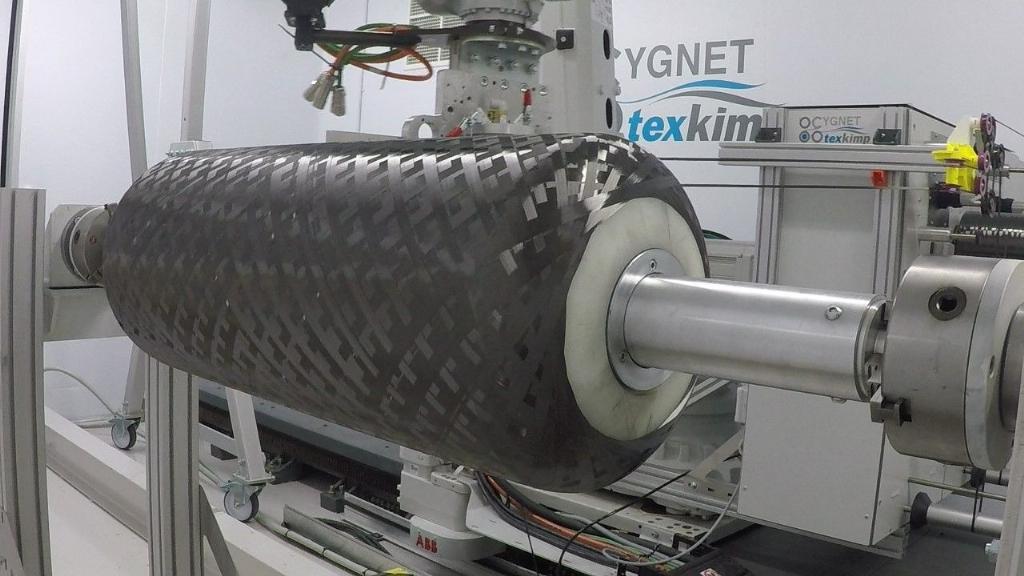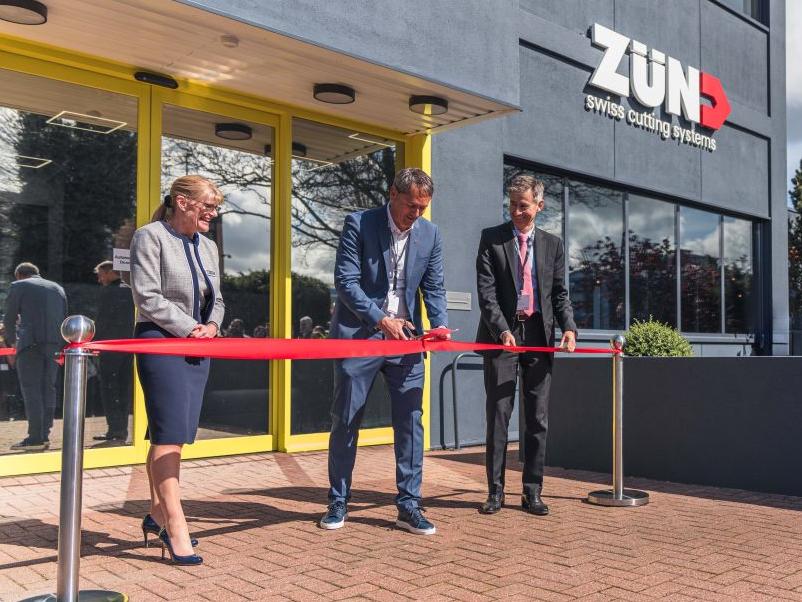Winding ways of wonder

Cygnet Texkimp’s technical manager Andy Whitham explains the company’s approach to filament winding under extreme tension and how new technology is being used to create stronger, lighter, high-performance parts.
Fibre expert and custom machine builder, Cygnet Texkimp is well-known in the industry for its fibre processing and converting machinery. The company now produces a wide range of downstream technologies for the international technical textiles market, including laminators, coaters, slitters and prepreg machines. In the last three years it has launched a series of filament winding technologies, including high-speed, multi-axis and 3D winding machines. Now the company has developed a way of winding fibre at extremely high tension to create composite parts that perform well under intense energetic forces, such as pressure, speed and rotation.
We developed our high-tension winding technology in response to a number of enquiries from manufacturers looking for ways to increase the strength and resistance of their composite parts without adding weight. We are a bespoke machine builder with dedicated R&D facilities and teams of specialist engineers, and this enables us to develop and test the exact machines our customers need. In this case we’ve designed a system that is particularly relevant in the manufacture of high-performance parts such as pressure vessels and high-speed rotating components.

We wanted to achieve a 50- to 100-fold increase in tension (to more than 1,000 Newtons per end) compared to the load that can sensibly be achieved from conventional filament winding.
Winding at tension allows manufacturers to pack fibres more tightly and uniformly around a mandrel or part. Resins, which are used to coat and set the fibres, are squeezed out in greater volumes during this process, which effectively increases the fibre-volume ratio and ultimately leaves you with a lighter, stronger part.
Take a high-speed fly wheel for example: a part that is subject to extremely high rotational loading. By winding a layer of fibre at high tension around a blank we can add an extra level of considerable strength; substantially increasing its capacity for speed and endurance without adding significant weight.
Pressure vessels, such as those used in an automotive environment, are subject to enormous internal pressure. By winding them under high tension, we can consolidate the fibre effectively and leave a residual compressive force in the part.
Modifying the process
Filament winding is a relatively fast and cost-effective way of producing parts and this makes it extremely relevant to high-volume markets. By modifying the technique to achieve high levels of tension in a way that is fast, consistent and repeatable, we’re now making the manufacture of high-performance composites more achievable to more areas of the market.
In 2019 we launched a programme of R&D to investigate general tensioning techniques and develop a new way of achieving higher levels of tension as part of the filament winding process.
One way to apply tension is to simply drag the fibre through the wet-out system. This is often nothing more than a set of fixed bars suspended in a bath of resin and feeding into the filament winding machine. The more bars that are used, the greater the tension produced. However, there are clear flaws in this approach which becomes problematic as tension increases. Damage to the fibre itself and the surfaces it touches occurs when the load is increased, to the extent that the fibre cuts into the bobbin or roller. Processing speed can also be limited by heat build-up, which affects the properties of the fibre too.
We’re known in the industry for the attention we pay to fibre integrity during any process. Our approach to high-tension winding has been no different, and this meant we needed to seek alternative approaches.
We explored the benefits of another widely used method of stretching fibre, known as the Godet system. This technique uses the capstan effect to draw fibre between rolls during processing. By winding a fibre multiple times between rolls, a compact drive or braking system is created which can be made to fit within the filament winder. This unit isolates the tension from the bobbin allowing it to unroll gently yet still creating a high level of winding tension. By preventing the fibre from slipping during handling, the rubbing friction and associated fibre damage are greatly reduced.
Taking control
Filament winding is a dynamic process which involves regular changes in fibre speed to create parts with different shapes and strengths. Our challenge was to ensure consistent winding tension during these speed variations.
To do this, we incorporated an electronic control system using bespoke software to manage the speed at which the rollers, bobbin and mandrel rotate in order to control the tension in the fibre. The control system makes very rapid changes to the speed of the Godet relative to the part, which alters the slack or tension and effectively increases or decreases the load between the two.
Extensive trials have shown that the system is easily capable of applying enough tension to exceed the breaking strain of a carbon fibre tow. Indeed, the elasticity of the carbon tow is also a factor we have had to consider, meaning the control system must act quickly to avoid a momentary overload causing the fibre to fail.
Another crucial element of this technology is its compatibility with thermoplastics. Thermoplastic tapes are attractive in this market because their total life cost is less than thermoset or metal alternatives, they don’t carry the issue of brittleness that thermosets to, and they are increasingly recyclable. However, they do tend to require higher tension to make well-consolidated parts due to the viscosity of the thermoplastic used, which makes our technology an ideal way of processing them.








